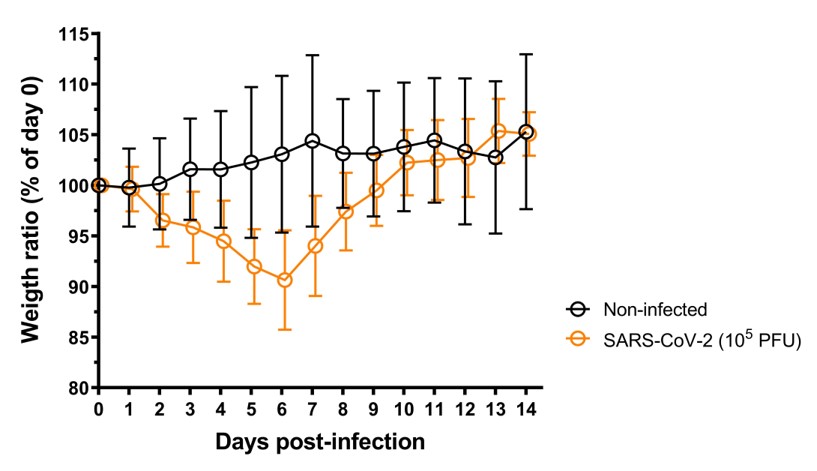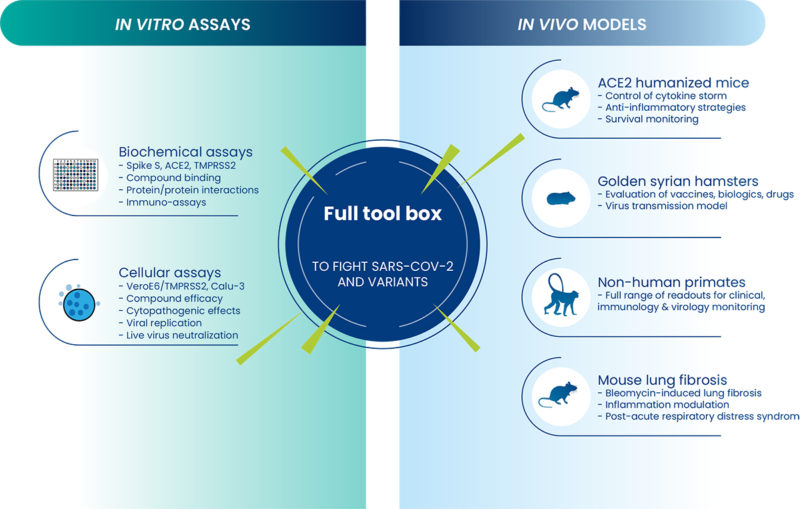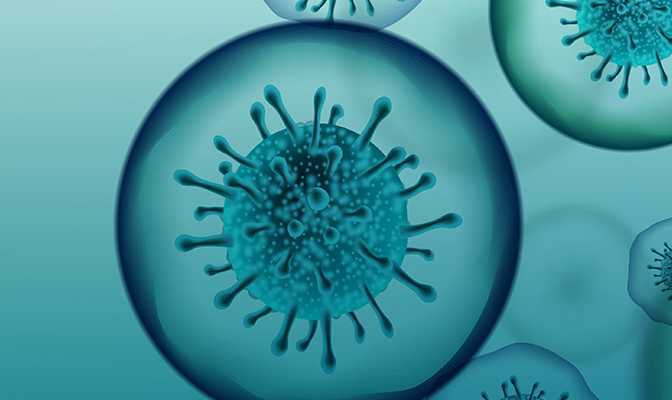


Fighting SARS–CoV–2 and its variants
Oncodesign Services swiftly deployed solutions to evaluate new prophylactic, therapeutic or vaccinal approaches to combat COVID-19. We offer the mild (common form) disease model of SARS-CoV-2 infection in the hamster model, and the lethal disease model in the K18- hACE2 mouse, as well as NHP models through our partner IDMIT.
In collaboration with our partner IDMIT (CEA, Fontenay, Paris, France), our Solo–Covid–19 offers the ability to evaluate the efficacy of new therapeutic options as well as repositioning of pre–existing options.
This offer is based on the use of an integrated panel of biochemical and cellular assays, including animal models, infected with SARS–CoV–2 or modeling inflammatory pulmonary complications.
Biochemical assays for Spike S protein binding, SARS-CoV-2 viral protease activities, human ACE2 protein binding and human TMPRSS2 protease activity.
- Infection tests of human and simian cells by the original SARS-CoV-2 variant and its variants (alpha, beta, gamma and delta) to assess the potential of compounds on viral load, cytopathogenic effect, immune modulation and air-liquid interface.
- Models of SARS-CoV-2 infection of transgenic mice, or non-lethal native infection of hamsters and non-human primates, using multiple analyses including imaging.
- Severe inflammatory model of pulmonary fibrosis in mice, to assess the proof of concept of therapeutic solutions oriented in the management and treatment of post-acute respiratory distress syndrome.
Case study
The hamster model is useful and efficient for treatment studies and also for re-infection studies, since hamsters transmit to each other by sneezing. Hamsters develop a self- resolving disease over a 2-week time frame. Untreated animals tend to lose about 15% body weight over 6 days, followed by recovery. Lung histology reveals inflammation mediated by immune cell infiltrates and tissue edema, peaking on day 7.


Severe models of COVID-19 are also available in mice (for instance in mice expressing the human ACE2 receptor under the control of the K18 promoter). After infection, such mouse models respond with a severe cytokine release syndrome and blood lymphopenia, and develop a lethal form of the disease within a week, even with low viral doses. The mouse model is characterized by:
- High lung viral load (even at 7DPI)
- Neuro-pathology (brain tissue infection)
- Severe dyspnea and body weight loss (leading to high clinical score)
- Reduced lethality with reduced virus dose
- Survivor animals show body weight recovery within 2 weeks post- infection




